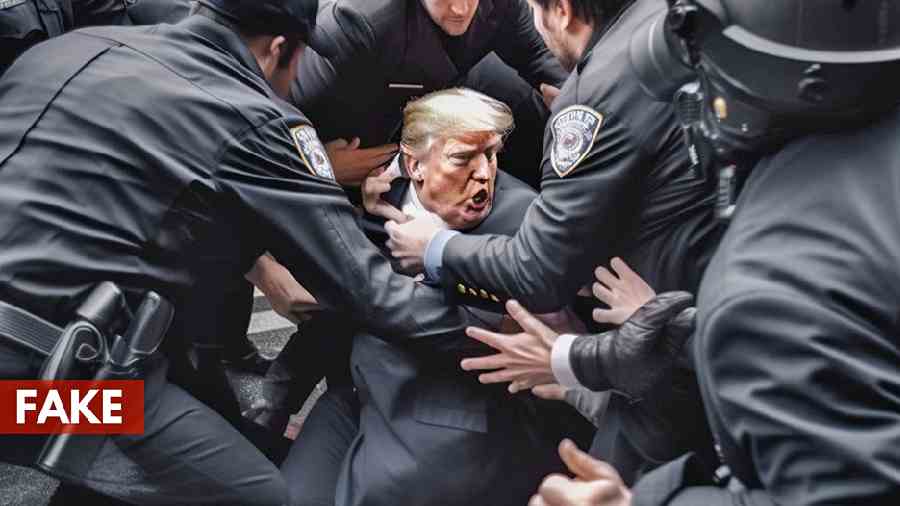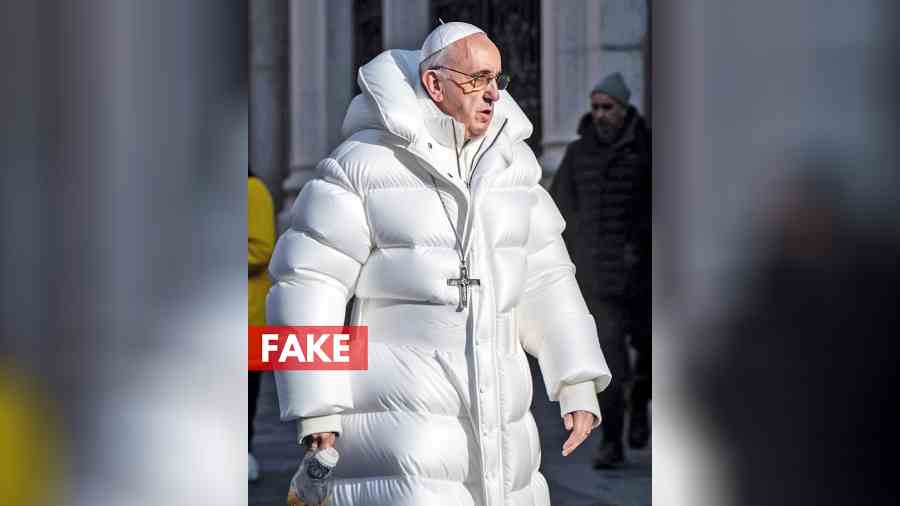Just under a year ago, Kendrick Lamar released his fifth album Mr. Morale & The Big Steppers and it had an interesting entry in the form of the song The Heart Part 5. There’s the usual Lamar flow as he raps As I get a little older, I realise life is perspective. Combine it with the message that appears before the video to the song — ‘I am. All of us.’ In the video, around the 1.45 mark, Lamar’s face morphs into that of O.J. Simpson’s and then he becomes Kanye West, Jussie Smollett and Will Smith while the lyrics correlating with the face he “wears”. This is just a video.
In the style of…
Now think of a song where the voice is generated by AI. Last week, the band AllttA released a track called Savage and making it unique is the voice of Jay-Z, which has been generated using AI. AllttA didn’t hide the fact. But that’s where we have reached technologically.
You may say this is a one-off. In February, DJ David Guetta showcased a clip before a live audience. The voice of Eminem was unmissable. Soon he clarified that it was created using AI and it wasn’t meant for commercial release. The French producer later said that musicians will use AI as just a tool to create new sounds.
In January, Drake fans were busy creating songs in the style of the rapper using an AI generator, hosted by Drayk.it, which soon after went down. The generator could create a song based on a text prompt.
Another example and this one is courtesy Nick Cave. One of his fans sent across lyrics written “in the style of Nick Cave” on ChatGPT. He had quite a reply to offer on his The Red Hand Files blog: “I’m a songwriter who is engaged, at this very moment, in the process of songwriting. It’s a blood and guts business, here at my desk, that requires something of me to initiate the new and fresh idea. It requires my humanness. What that new idea is, I don’t know, but it is out there somewhere, searching for me. In time, we will find each other. Mark, thanks for the song, but with all the love and respect in the world, this song is b******t, a grotesque mockery of what it is to be human.”
Politicians to retro life
It’s not just music. AI is behind fake images that may pose a massive challenge in the future. Recently, a picture of Pope Francis in a Balenciaga puffer jacket was all over the Internet as was that of former US president Donald Trump resisting arrest. Trump has been indicted but not arrested and no, the Pope doesn’t have a papal athleisure wardrobe.

An AI-generated image of former US president Donald Trump resisting arrest. Fact: Trump has been indicted but not arrested
Seeing or hearing is no longer believing. Lately, the AI image generator Midjourney is in the news. Only a year old, the San Francisco company’s product is being seen as a perfect match for the “viral” era we are living in. The platform has been used to generate fabricated images of Twitter owner Elon Musk with Alexandria Ocasio-Cortez and former US president John F. Kennedy aiming a rifle.

An AI-generated photograph of US president John F. Kennedy aiming a rifle
Midjourney has established its place in the field of AI art and so has Stable Diffusion and DALL-E, which was developed by OpenAI (also the creator of the AI language model ChatGPT). Interest in AI-generated art has scaled to the point that Midjourney has halted free trials of its service because of a sudden influx of new users. The company’s CEO and founder David Holz has pointed at “extraordinary demand and trial abuse” on Discord. Users were making fake accounts to generated free images. For now, you’ll have to pay at least $10 per month to use the technology.
Though we are seeing plenty of fake pictures of world leaders being created using Midjourney but not that of China’s president, Xi Jinping, because the moderators don’t allow it. “We just want to minimise drama. Political satire in China is pretty not-okay” and “the ability for people in China to use this tech is more important than your ability to generate satire”, Holz said last year in a post on the chat service Discord.
The platform is also being used creatively. Street photographers like Zhang Haijun are using the platform to generate retro-style images. Zhang, born in Chongqing in 1992, grew up near one of the oldest steel factories in China and he is trying to recreate pictures that reflect his childhood memories. Then there’s photographer and UI designer Kim Wang who is interested in creating photos of China in the 1980s and ’90s.
Not that the ‘Pope Drip’ image or Trump resisting arrest highlight the best of AI technology but it shows the degree to which the barriers to creating fake images have dropped. Earlier, a person needed plenty of knowledge of something like Photoshop to create a fake image, now only a few dollars and minutes are needed. Levi’s said last month that it is partnering with AI studio Lalaland.ai to create AI-generated models to “supplement human models” and increase the “number and diversity of our models”.
The bigger question remains unanswered — is social media equipped to handle visual and sonic trickery? Before you retweet a picture of Pope Francis in jeans, think twice, it’s not all right.
